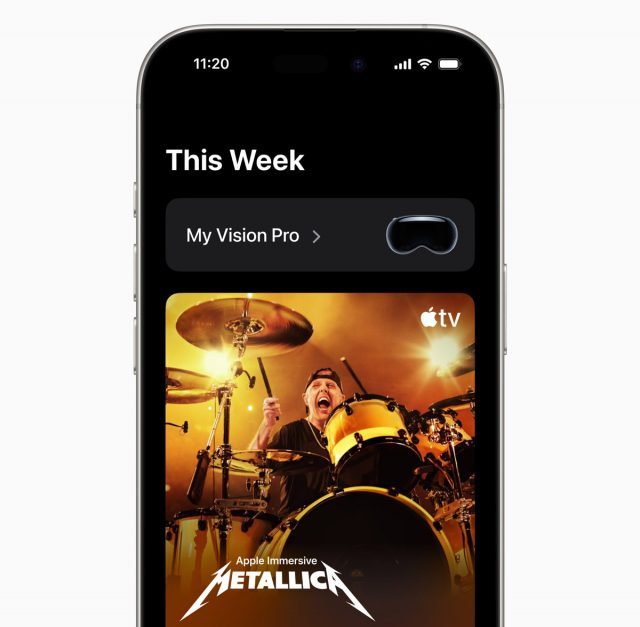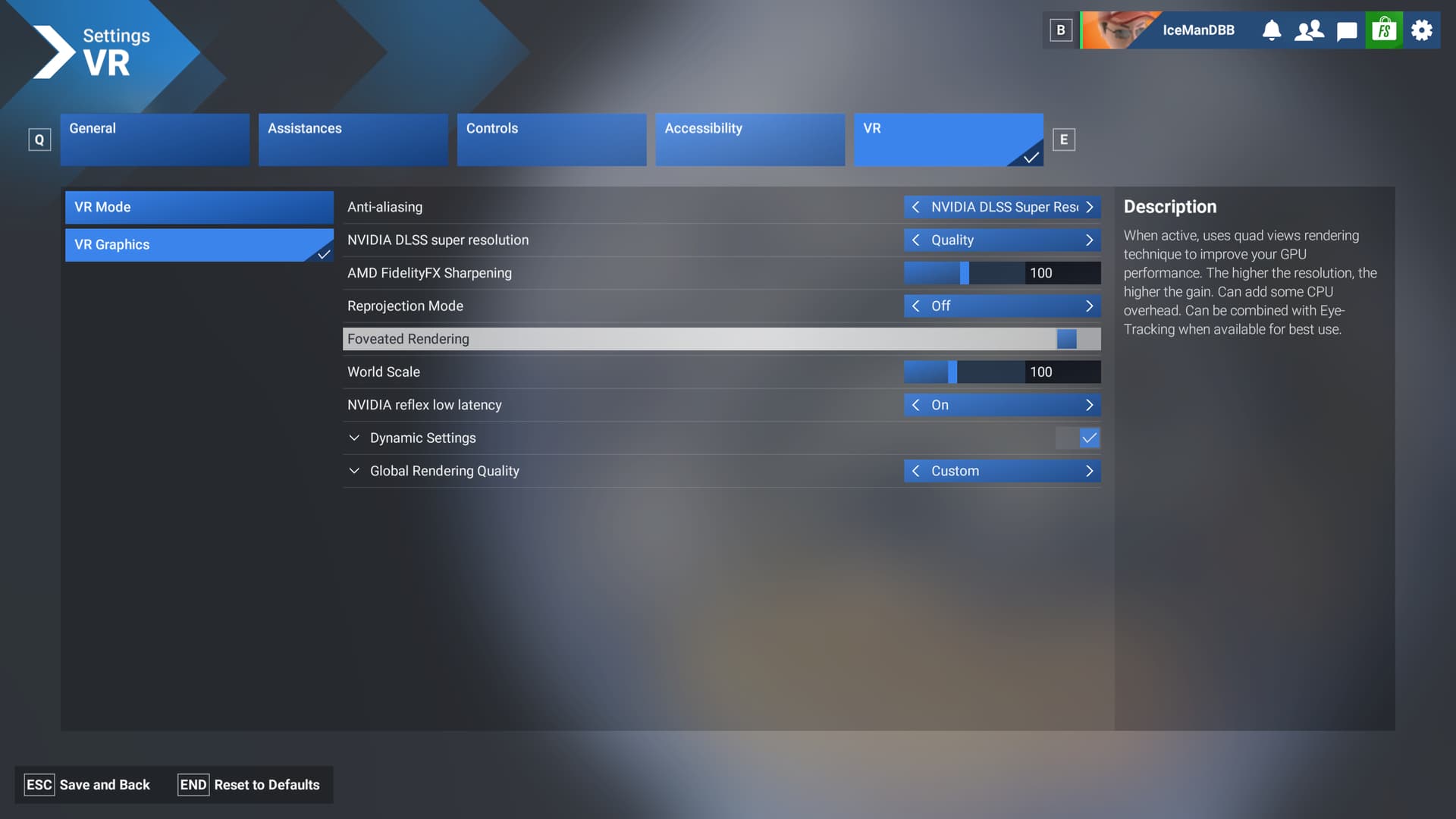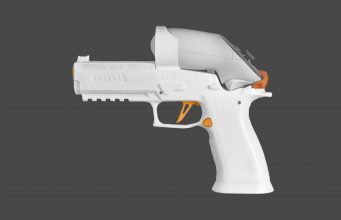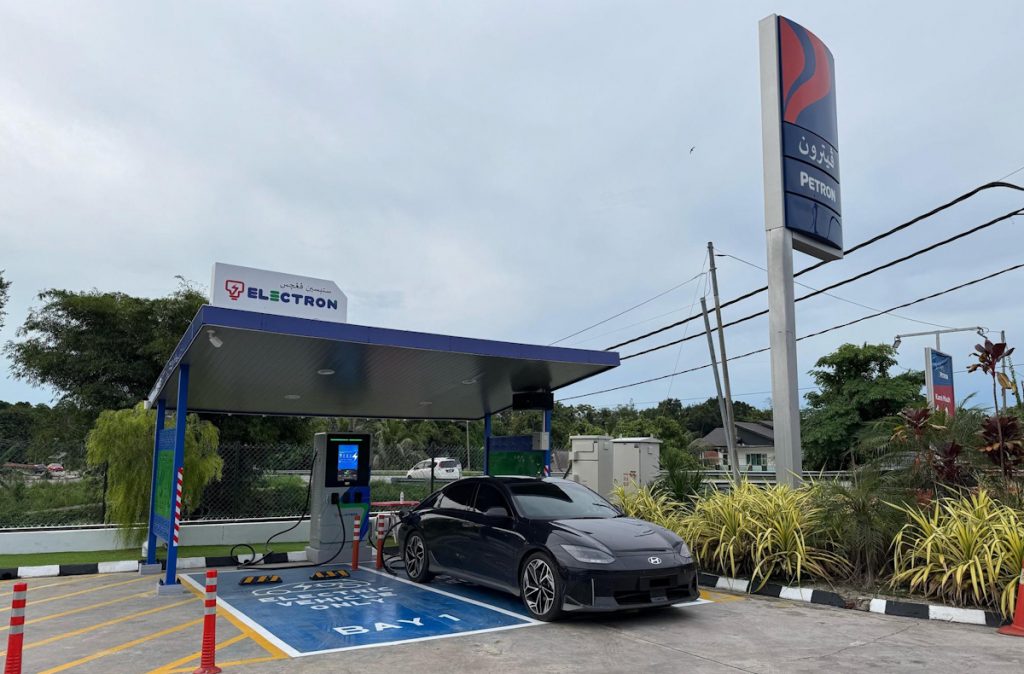Batman: Arkham Shadow stays true to the series formula. But did developer Camouflaj manage to make the game feel truly at home in VR? Read our full review to find out.
Batman: Arkham Shadow Details:
Publisher: Oculus Studios
Developer: Camouflaj
Available On: Meta Horizon (exclusive to Quest 3 & Quest 3S)
Reviewed On: Quest 3
Release Date: October 21st, 2024
Price: $50
Gameplay
Batman: Arkham Shadow is a lot like Half-Life: Alyx. No, not in the gameplay. Or the story. Or the graphics.
It’s a lot like Half-Life: Alyx in the way that the creators managed to completely reimagine how the game actually works, without losing the essence of the series.
For some context: I’m not the world’s biggest ‘Batman’ fan. I’d say I’m a casual enjoyer. I liked the Christopher Nolan trilogy and I enjoyed the Arkham games (though I’ve only played two of the four main line titles). I’ve never read any of the comics, nor do I own a single piece of Batman-related paraphernalia.
Even so, just like the Arkham games I played before it, Batman: Arkham Shadow is a fun game.
And it feels like an Arkham game. The gameplay primarily falls into the buckets of exploration, light puzzling, and combat, and all are done pretty successfully. Let’s start with exploration and puzzling.
Although you don’t have a whole city to roam like in Arkham City, the game does a reasonably good job of having large open and connected spaces that feel convincingly large. It’s much closer to Arkham Asylum in that sense; for the most part you’re roaming a ‘facility’ sized space.
Aside from just walking around the ground, you’ll also use your grapnel gun which you can use to quickly ascend to balconies and other high places that are great for staying out of sight. Although I would have liked to see a more immersive approach to how the grapnel gun is actually initiated, the unique way it pulls you through the air feels both fun and surprisingly comfortable.
Another important traversal tool is gliding with your cape, which also feels fun and surprisingly comfortable. As it’s initiated with an immersive gesture (grabbing your cape and pulling your arms up), it feels cool every time you do it. This is aided by the cool detail of seeing the shadow of your outstretched cape cast onto the ground below where you’re flying.
As you’re moving through the game world, there’s at least five different kinds of collectibles to find, most of which unlock some bits of lore. While I normally don’t care about ‘collectibles’ (or off-screen lore), I enjoyed hunting these down because each was either hidden in a clever place that was fun to find, or locked behind a little puzzle. Although the puzzles are light, they’re just the right amount of bite-sized fun to keep you entertained on your way to primary objectives. For the ‘100%’ people out there, I think you’ll enjoy the hunt.
Part of the puzzling is also figuring out how to get from A to B and some objective-based puzzles. You’ll often need to search for ways around obstacles, whether they be locked doors or electrified floors. Sometimes the solution is finding another path, and sometimes it’s figuring out how to unblock the door in front of you.
There’s no major headscratchers—or highly memorable puzzles for that matter—but the game hits a perfect sweet spot of difficulty where you spend 30 seconds or less understanding the logic and then actually solving the puzzle involves some fun itself (whether that be throwing batarangs to hit buttons, pulling levers at the right time, or using one of your other gadgets to assist the process).
Next we’ve got combat, which plays like a beat-em-up. The game cleverly uses your punches as your primary means of locomotion, turning swings into lunges that launch you toward enemies. Arkham Shadow is about as far from a physics-driven VR melee sim.
Instead the game makes significant use of instructed motion mechanics [a concept I explored in a recent episode of Inside XR Design], asking players to make specific attacks in specific directions. While this removes a lot of freedom, it means players fight like Batman, which adds to the fantasy of the game.
It also leads to fluid and satisfying combat that allows meta-game elements to be layered on top in the way you’d typically expect from a flatscreen game. Just like the prior Arkham games, that means different enemy types that need to be handled in different ways.
There’s the run-of-the-mill bad guy that just needs a beat down, the armored dude that needs to be stunned with your cape before a flurry of blows, the stun-baton wielder that you need to vault off of before the slam down, and the swat-shield holder that needs a combination of the two.
The game really nails the essence of Arkham combat, in which players fluidly tackle these different threats, weaving various gadgets and abilities into the mix to keep enemies busy while you dish out the pain.
Combat does take some getting used to, but the game does a good job of introducing mechanics and new enemies at the right pace to give the player time to improve as the game grows more challenging. The game achieves a satisfying arc of combat, making the player feel at first like a novice, but a beast of a brawler by the end.
As you play you’ll earn skill points which you can use to unlock skills and upgrades. The combat skill tree has quite a few new and fun moves to be unlocked, like the ability to use the grapnel hook to pull enemies toward your knuckle sandwich. Although the moves are fun, most need to be activated by not only hitting a certain combo count, but then pressing a button and doing an additional unique gesture.
It can be a lot to juggle mentally in the heat of combat, alongside the ability to use your batarang and explosive gel. I had to consult the game menu several times to remind myself which of these abilities I had and how to use them.
The game doesn’t force you to use most of these extra abilities, but they’re essential to both success in combat and a solid level of combat variety. I’m sure there will be players who forget about these abilities and pretty much just throw basic punches the whole time, which would leave the combat feeling a bit one-note.
While there’s plenty of all-out brawls, there’s also enemies with guns which will not hesitate to put you down if you’re spotted. For these situations you’ll want to stick to the shadows in what the game calls its ‘predator’ gameplay.
Anyone who has played the other Arkham games will recognize this gameplay loop. You’ll use high vantage points to stay in the shadows while surveilling the landscape below you with your ‘detective mode’ vision which reveals enemies through walls and highlights useful environmental objects.
And this gameplay loop works just as well in Arkham Shadow. If you jump in without a plan you’re almost sure to take damage, if not die outright. But if you take time to assess the situation and find the best opportunities to exploit, you’ll steadily disarm the threat.
Sticking to stealth in these situations is important. It wasn’t until later into the game that I realized I could fly down with my cape and land behind someone while remaining undetected. This allows for a stealth takedown before returning to the shadows. Up until that realization it felt like most of my actions would immediately alert all the guards in the room, causing bullets to fly my way within seconds.
Overall, the combat in Arkham Shadow feels very cohesive, and the different forms of ‘all-out brawl’ and ‘predator’ gameplay gel well together while still feeling fun and varied.
All of the above is largely to say that the developers of Arkham Shadow really took their time to understand what an Arkham game is and what it’s supposed to feel like. It’s the latter part that’s often missed in VR. But they managed to distill the formula and then successfully reconstitute it with thoughtfully designed VR mechanics.
But hey, the gameplay managed to pull me through. And there is a good bit of it. Batman: Arkham Shadow is a rare VR game with a campaign that feels like it has meat on the bones. It took about 10.5 hours to complete the game on medium difficulty. I did take my time to find many of the collectibles along the way, but the game says I’ve completed 84% of everything there is to be found, so I could still go back for some more if I was so inclined. There’s also a handful of ‘challenge’ sequences outside of the main campaign which offer some extra fun for those that want to put their combat skills to the test.
Immersion
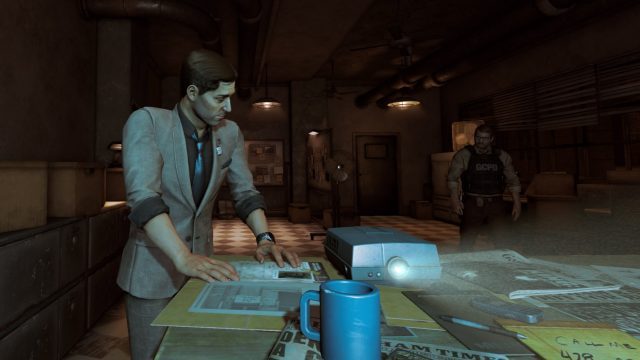
While Batman: Arkham Shadows’ gameplay is really solid, the game also has a significant narrative which holds all the pieces together. This is the only major area where the game isn’t particularly successful, and unfortunately it cut down the immersion for me.
It’s a shame because clearly a lot of time went into the narrative side of things, with solid motion capture, above average voice acting, impressive world-building, and some cleverly presented sequences that used pre-rendered immersive video playback.
The key narrative issue for me is one of pacing and direction. The narrative is largely presented in first-person moments with characters monologuing in your direction.
The way the characters are written makes them feel like caricatures, and the way the scenes are directed makes it feel like you’re watching a theater play rather than listening to a real conversation that’s right in front of you. The pace of delivery was just so painfully slow across the board that I found myself literally twiddling my thumbs (distracted by the impressive procedural finger animation tech) while characters were delivering their lines.
It doesn’t help that the story covers extremely familiar ground. Like I said, I’m not even a particularly huge fan, but even I have probably seen 5 different interpretations of ‘Bruce Wayne’s parents killed in a mugging outside the theater’. A 6th version isn’t really adding anything.
For what it’s worth you can skip most of the narrative moments by holding B. But the thing is, I don’t want to skip the story. I want to know what’s going on and I want context for what’s happening—I just also want it to be engaging. I want characters to care about.
While many of the narrative moments felt like they could have been played at twice the speed (and still might have been too slow), there were a few that were more successful. These were almost universally the narrative sequences that were mixed with some level of interaction—like when you’re interrogating a bad guy and punch him through a wall before lifting him up by the collar to intimidate him.
I did appreciate that the game tried to make use of asking the player to hand things to characters (to create a feeling of real interactivity), but this was unfortunately undercut by both the slow pacing of these moments and the lack of any other kind of player-to-character interactivity.
With its gesture-based combat, Arkham Shadow might not be the most embodying game [another concept I touched on in an episode of Inside XR Design], but it’s surely immersive. There’s enough to juggle mentally while laying the smackdown on a group of varied enemies that one can easily forget about the outside world. I expect to hear many real-life reports of bruised knuckles and broken TVs as a result. Make sure to wear your wrist straps folks!
The game’s visual presentation is impressive throughout. It’s clearly not modern AAA graphics, but the look fits the Arkham art style very well, and the world is feels suitably detailed. There was scarcely anything in the game to overtly remind me that this is all running on a standalone VR headset (except, perhaps, the number of slow opening doors that mask much of the game’s level loading process). This is a strong example of what Quest 3 and 3S can do when backed with the right talent and funding.
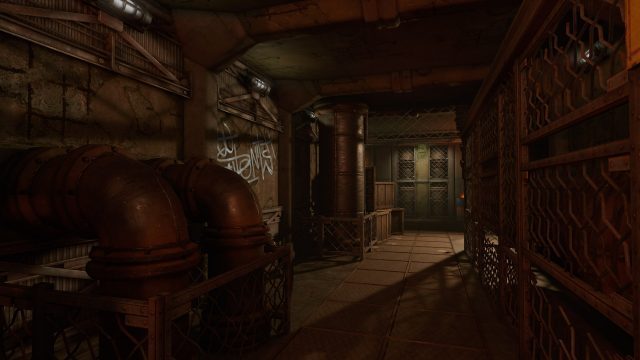
While the world is detailed and there are occasionally interactive objects to play with, there’s much in the game that’s completely static. The gameplay is such that you don’t tend to get lost in the weeds with smaller interactions, but it’s always a little jarring to find one book on a bookshelf that’s interactive right next to a row of books that are fused together and completely static.
While the game defaults to directing users to use thumbsticks for a handful of actions (like mantling or climbing out of a grate), I appreciated that there was usually an immersive alternative as well. I found it much more natural to reach up to a ledge and pull myself up rather than hold the stick forward to automatically climb.
One thing that felt like a miss is that characters in the game are 100% unaware of player actions. You can clip your hand through their face while they’re talking to you, or throw a bottle at their head, but they won’t react.
Counterintuitively, when characters don’t react, it doesn’t just make the character feel less believable, it also makes the player feel less convinced that they actually exist in the world. This isn’t a hugely important detail but it was notable considering how often you are within arm’s reach of the game’s characters during narrative moments.
Comfort
For all of its movement, I was impressed with how comfortable I felt while playing Batman: Arkham Shadow for sessions stretching an hour or more. I’m not surprised—considering the magic the studio pulled with Iron Man VR’s comfort—but I am impressed.
There’s a lot of thoughtful comfort design throughout. For instance, the game manages to recreate the classic Arkham ‘counter attack’ by quickly snap-turning you into the correct direction to face the off-screen enemy. And you can automatically face forward when grapneling up to a vantage point by holding the A button as you move through the air.
There seems to be some trick to how the game moves the player; a certain intentional smoothness about it. Like the way the grapnel gun pulls you up, or the way you lunge at enemies, or the way you glide through the air with your cape. It all felt more comfortable than I expected.
That’s not to say that everyone will be able to handle the game. There’s a lot of artificial locomotion, and unfortunately no teleport option to speak of. So if you’re someone who can’t tolerate much artificial movement, this one might need to be a pass.
But, as always, don’t forget Meta has a fair refund policy: you can own the game for up to 14 days and play it for up to two hours before refunding it. So don’t be scared to give it a try to find out about the comfort—you can get your money back if it isn’t for you.
Arkham Shadow has an above average selection of comfort and accessibility options. There’s some thoughtful inclusions like the ability to turn off ‘speed lines’ while sprinting, adjusting the color of the game’s critical combat icons, and even changing the way the game interprets your object-grabbing intent.
Batman: Arkham Shadow’ Comfort Settings – October 21st, 2024 |
|
Turning |
|
| Artificial turning | |
| Snap-turn | ✔ |
| Quick-turn | ✔ |
| Smooth-turn | ✔ |
Movement |
|
| Artificial movement | |
| Teleport-move | ✖ |
| Dash-move | ✖ |
| Smooth-move | ✔ |
| Blinders | ✔ |
| Head-based | ✔ |
| Controller-based | ✖ |
| Swappable movement hand | ✔ |
Posture |
|
| Standing mode | ✔ |
| Seated mode | (not explicit) |
| Artificial crouch | ✔ |
| Real crouch | ✔ |
Accessibility |
|
| Subtitles | |
| Languages |
English, French, Spanish (Latin America), Spanish (European), Italian, German, Japanese, Korean |
| Dialogue audio | |
| Languages | English |
| Adjustable difficulty | ✔ |
| Two hands required | ✔ |
| Real crouch required | ✖ |
| Hearing required | ✖ |
| Adjustable player height | ✔ |


